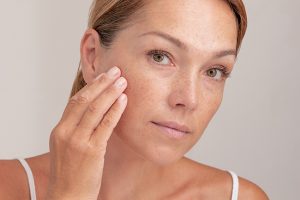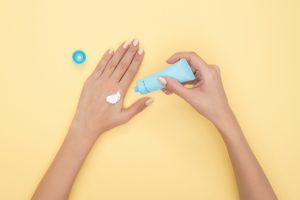How To Make Skin Smoother & More Radiant

Focusing on creating smooth, radiant skin can do wonders for your appearance. Dewy, glowing skin is noticeable from across the room, helping you stand out and feel as confident as possible. But how do you get there? Does it have to involve costly, painful procedures?
The answer is no! Learning how to make skin smoother doesn’t have to break the bank. The skin care professionals at Miami MD are here to show you how you can refresh your skin and reveal your brightest, most beautiful skin yet.
What Issues Affect Skin Smoothness?
If your skin has been looking and feeling rough, you’re probably wondering what may be going on. While everyone’s skin is different, two factors can impact the skin’s texture in a significant way — dehydration and dead skin cells.
Dehydration
The skin can become dehydrated from both the inside and the outside. Regardless, the result is the same.
Internally, if you’re not drinking enough water, it directly impacts your skin. Remember, the skin is an organ just like the heart, lungs, etc. It is the largest organ in the entire body, in fact, which many people tend to forget.
The skin covers the whole body and functions mainly as protection, keeping the outside out and inside in. And, just like every other organ, the skin requires water to function at an optimal level.
When the body becomes dehydrated, it has to decide where and how to ration out its water. These tough decisions focus on keeping the most vital organs running, and it does that by pulling water from the organs and tissues that can function without them the easiest. Unfortunately, that often means the skin is on the losing end.
The skin can also become dehydrated as a result of external factors.
Environmental triggers of dehydration include anything that directly impacts the skin — UV radiation from the sun, wind exposure, pollutants, and extreme weather (hot and cold). Even though the skin protects us as much as possible from the effects of those triggers, it can only hold out for so long without outside help.
Dead Skin Cells
The other factor that can lead to less radiant, smooth skin is a build-up of dead skin cells on the top layer of the skin. Our skin is constantly going through the process of turning itself over, a cycle that takes about 28 days from start to finish.
This cycle takes place entirely in the epidermis, the top layer of the skin that is also divided into five sublayers of its own. New skin cells start at the bottom layer (the stratum basale) and slowly make their way up until they end up at the stratum corneum.
Once they arrive at the stratum corneum, they are no longer “alive” and functional. These dead skin cells are simply sitting on the top layer of the skin, waiting to be shed. In many cases, the typical day-to-day activities are enough to help those skin cells naturally fall off. In some situations, they may need a little extra assistance.
When those cells stay on the surface of the skin, they inhibit the renewed, more youthful skin cells from shining through like they should.
How To Make Skin Smoother and More Radiant
When you know what causes the skin to look rough and dull, you can also develop ways to help it look smoother and more radiant. That means addressing both dehydration and dead skin cells in ways that support the skin and give it what it needs to thrive.
Exfoliation Is Key
Exfoliation is one of the most multi-faceted and often overlooked additions to a skincare routine. A quality, supportive exfoliating product directly addresses the build-up of dead skin cells on the skin’s surface. Besides, exfoliating the skin also helps to remove any dirt, makeup, and environmental debris that your cleansing routine may have missed.
When choosing an exfoliant, make sure you’re using one that works with your skin type. Some of the more potent chemical exfoliants may be too much for your skin if you have sensitive skin.
In general, mechanical (or physical) exfoliants can do more harm than good, so it’s best to steer away from them as well.
Use The Right Moisturizer
What exfoliation can do for the build-up of dead skin cells, moisturizing can do for dehydration. The correct moisturizer for your skin type can help replenish and hydrate the skin from the outside, especially if you look for proven ingredients.
One of the most beneficial of those ingredients is hyaluronic acid. Hyaluronic acid, a product that is also naturally produced by the body, can pull massive amounts of moisture into the body and hold it there. In addition, because it is a substance that the body is used to, it can usually be used by people with all different types of skin and skincare issues.
If your skin is on the oilier side, don’t be drawn into believing that you don’t need a moisturizer too. One of the skin’s natural responses to dehydration is to produce additional sebum to try and protect the skin, so oily skin types may need moisturizer more than even dry skin types.
Know How To Combine Products
Combining your products effectively, both skincare and makeup, is also critical. The best skincare routine in the world can’t fight against ingredients that work against each other, and it may require a little detective work and trial and error to find the best combination.
Knowing how to combine products also means knowing what order to apply them. If you put on your moisturizer before your serums, for example, you’re not using either product effectively.
Serums, like our Instant Wrinkle Eraser, need to be applied directly to clean skin to work. Moisturizers should always be the last step in your routine unless you’re also applying sunscreen. Minor tweaks like this can make a world of difference.
Create a Supportive Environment For Your Skin
Because dehydration is a combination of internal and external factors, helping combat it requires that you approach treatment from both directions as well. A quality moisturizer can help give your skin what it needs to maintain its hydration level and repair a potentially damaged moisture barrier. You can help your skin be even more hydrated by using a humidifier in your home.
In addition, give your skin the hydration it needs from the inside as well. That means making sure that you are drinking enough water every day and eating plenty of fresh fruits and vegetables instead of processed foods. Changes like these support your entire body, not just your skin.
And last but certainly not least, never leave home without applying sunscreen. So many of the problems we see with the skin, in both the short-term and the long-term, can be triggered or worsened by ultraviolet radiation.
Make sure you’re using sunscreen that has an SPF of 35 or more, protects against both UVA and UVB radiation and is resistant to water.
In Summary
Learning how to make skin smoother and more radiant is about understanding what factors make it not that way. When you tackle dehydration and the build-up of dead skin cells on the skin’s surface head-on, you can help give you the healthy glow you’ve always wanted.
Miami MD skincare products can help you reach those goals, and we’re here to answer any questions you may have along the way.
Sources:
Anatomy, Skin (Integument), Epidermis – StatPearls | NCBI Bookshelf (nih.gov)
Epidermis – an overview | ScienceDirect Topics
Hyaluronic acid: A key molecule in skin aging | NIH (nih.gov)













